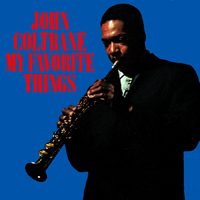Crawford notes that the representation of women in jazz music was primarily restricted to vocal performance and singing. That being said, the contribution by these female performers was quite significant and one wonders how the nature of jazz could have been enhanced if more contributions existed of female composers or instrumentalists in the genre.
Sarah Vaughan has been hailed as a revolutionary vocal performer whose vast range of both vocal technique and emotional quality created a new standard of jazz performers. Even within the same piece, Sarah Vaughan’s style can change drastically as seen in her recording of “My Favorite Things”
[ iframe src=”http://ezproxy.stolaf.edu/login?url=https://search.alexanderstreet.com/embed/token/058doe9g6co36e0″ frameborder=”0″ height=”145″ width=”470″ ]
While the beginning displays an incredible lyrical and smooth quality to it, the last half of her performance contrasts this with a much crisper consonants, harsher vowels, and an improvisatory, drawn out rhythmic quality.
Entirely other music techniques can be seen in her performance of “Nobody Else But Me” which possess much more of the style of the last half of “My Favorite Things.” Long, held-out alto notes create a power and confidence in her voice steering away from the more soft, sensual or sultry sound of other vocal jazz music.
[ iframe src=”http://ezproxy.stolaf.edu/login?url=https://search.alexanderstreet.com/embed/token/07ru8e9g6co38c0″ frameborder=”0″ height=”145″ width=”470″ ]
The question of women’s role in jazz music can raise interesting questions of how the genre of jazz might have been different if more women composers had been represented. It is also interesting to contemplate how the genre may have changed, if at all, if it had possessed more female composers and more male vocal performers.
Sources: https://search.alexanderstreet.com/view/work/903038

